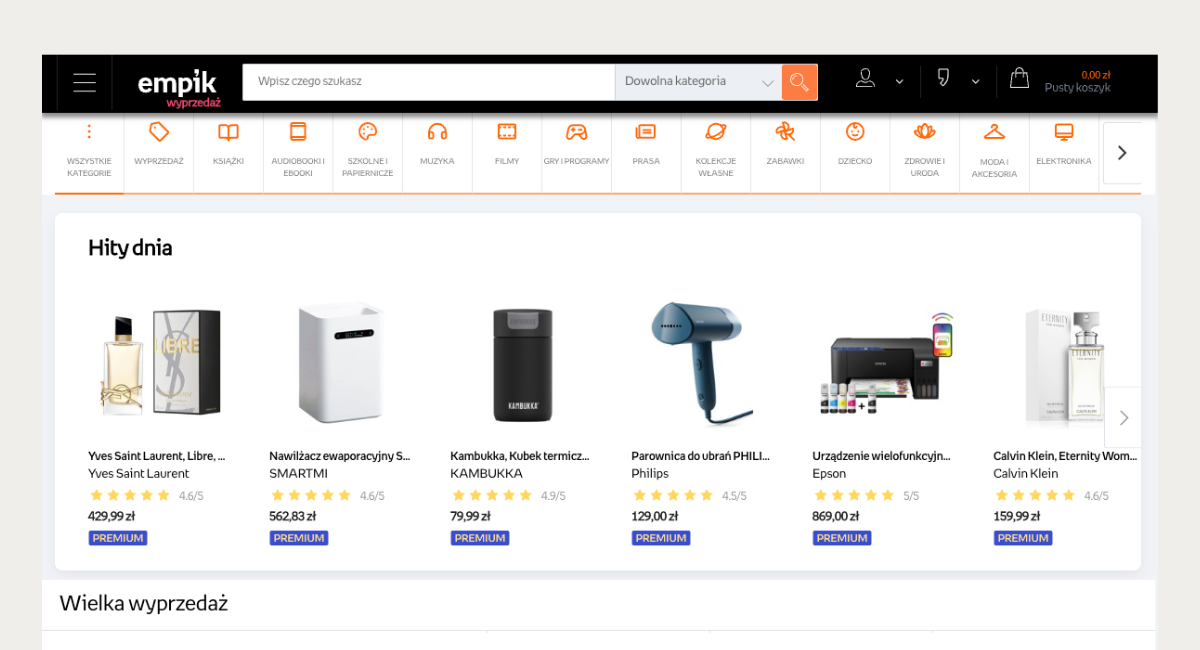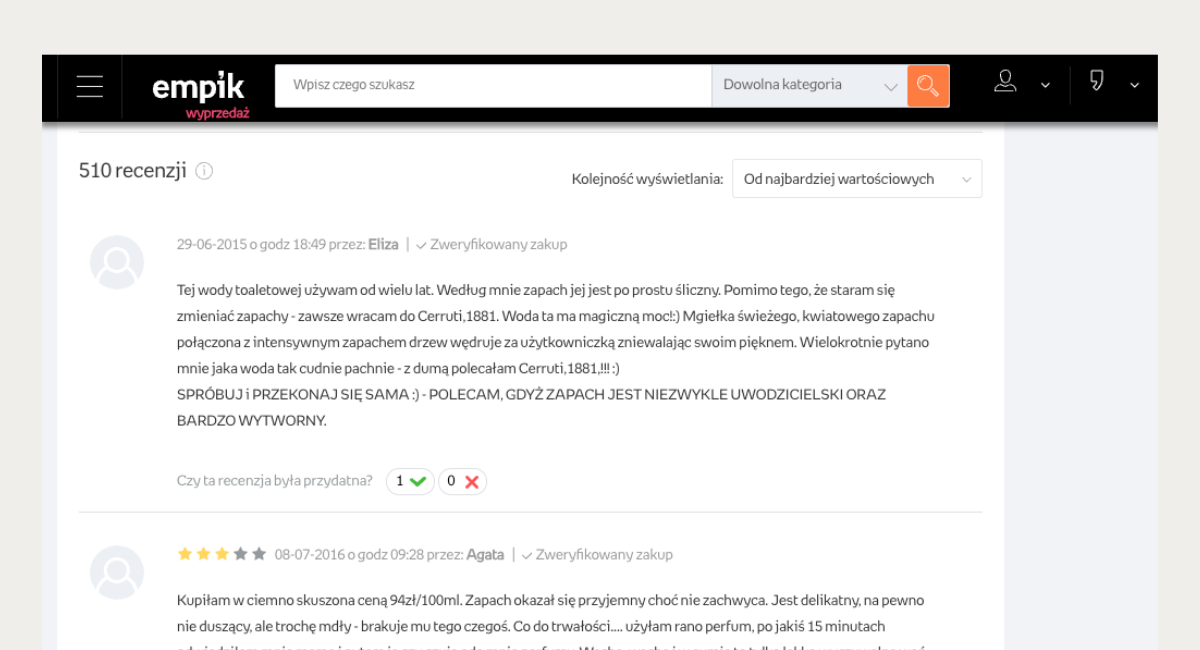The Omnibus Directive is now live in Poland - what has changed?
January 12, 2023 / 8 min read

Photo by Guillaume Périgois on Unsplash
Good news for all consumers tired of unethical practices that many e-tailers have unfortunately engaged themselves in over the past years. The EU-enforced Omnibus Directive is now live in most EU countries, including Poland. In this article, I take a closer look into what has happened to the e-commerce market in my homeland since the application of these new regulations.
Omnibus Directive in short
Most of you are likely familiar with what Omnibus brings, but let me summarise it quickly to make sure we do not exclude anyone. For most customers and businesses in Poland, the implementation of Omnibus mostly affects the following areas of e-commerce:
Reviews and Recommendations
For a B2C business, publishing reviews without clear information on the review verification process is no longer possible. Given that 93% of Polish e-shoppers consider reviews one of the main decision-making elements, this is a significant change. And it does not end on the company-owned website. Social media recommendations and reviews related to the company’s product or service also cannot be manipulated.
E-commerce Platforms
The provider of such a service (e.g. a marketplace) must now inform consumers about the seller’s status so it would be clear whether the buyer is dealing with a company or a private individual. This is especially important since private trade is not subject to many regulations advantageous to consumers, such as the right to return the product within a certain timeframe. The platform must also make sure consumers know the shared obligations related to consumer contracts between the platform and the seller. This will help protect consumers from hidden or unclear terms that could harm their rights.
Information about Prices
E-commerce companies are now obliged to be transparent to consumers about i.e. automated decision-making processes that affect prices. And last but not least - should the seller advertise a price drop, they must also advise on the lowest price of the advertised item or service in a timeframe of 30 days before the introduction of the discount.
Polish online stores implement Omnibus regulations
Polish e-commerce businesses have been preparing for the implementation of the Omnibus Directive in several ways. Many have reviewed and updated their terms and conditions to ensure that they are compliant with the new regulations and developed additional features that could help execute the information obligations. This has involved reviewing the information that is provided to consumers and making sure that it is clear and transparently illustrated by interface design. Leading e-commerce software providers also made updates to their products to facilitate the seamless integration of new features into their customers’ stores. But as the law went into force on January 1st 2023, have they all passed muster?
Task 1: Show the price history of discounted items
Since the legal interpretations vary (some lawyers argue that displaying price history is a suggestion, not a requirement) not all businesses decided to apply price history visualisation to their online stores. Though, most of the websites in review already implemented necessary backend features as well as frontend changes to make sure they comply with new regulations. Better safe than sorry. Of course, there is no one-size-fits-all solution here since each business is differently modelled, and has its own assortment and price strategy, so introducing this feature surely did require some effort. Regarding the e-commerce sales model, I hypothesised that large multi-brand e-tailers would have implemented it much more effectively and clearly than brands, but I was wrong.
Only Bio
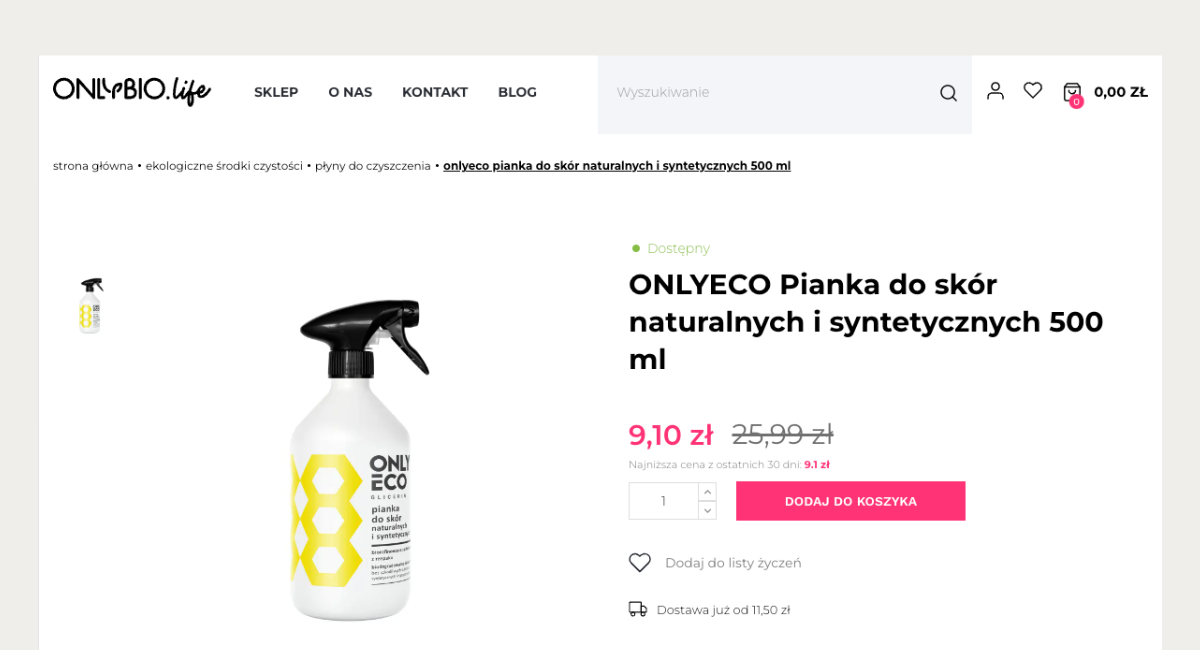
Here is an example of a brand-owned D2C online store in the beauty industry that informs consumers of the advertised product’s lowest price in the last 30 days. The information is being displayed right under the current price marked in pink and (what I presume to be) RRP that had been crossed out. Shame it is being shown in small print and that the information does not specify whether the “lowest price in the last 30 days” applies to 30 days before discount application or 30 days before today. Score: 3/5.
Dolina Noteci
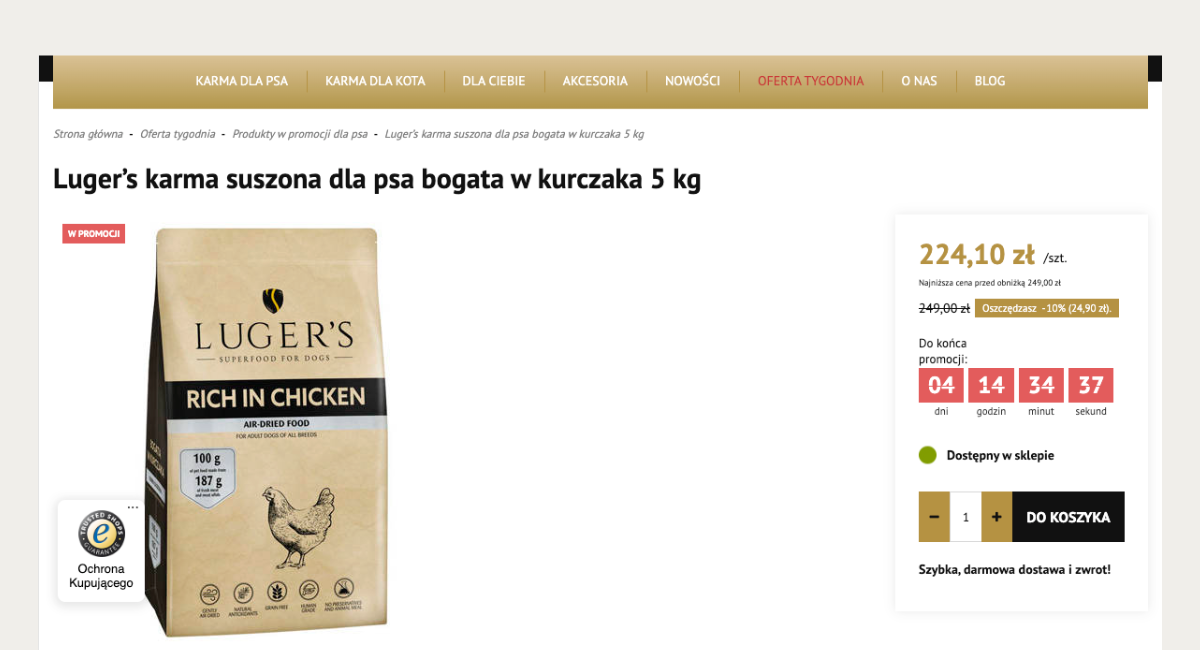
Another example - this time, a D2C pet food e-commerce. The brand, Dolina Noteci, is doing a better job than Only Bio - even though the information is being displayed in equally small font size, visitors can clearly understand that the lowest price displayed below the promotional one means the lowest one in 30 days before the discount introduction. Score: 4/5
NAOKO
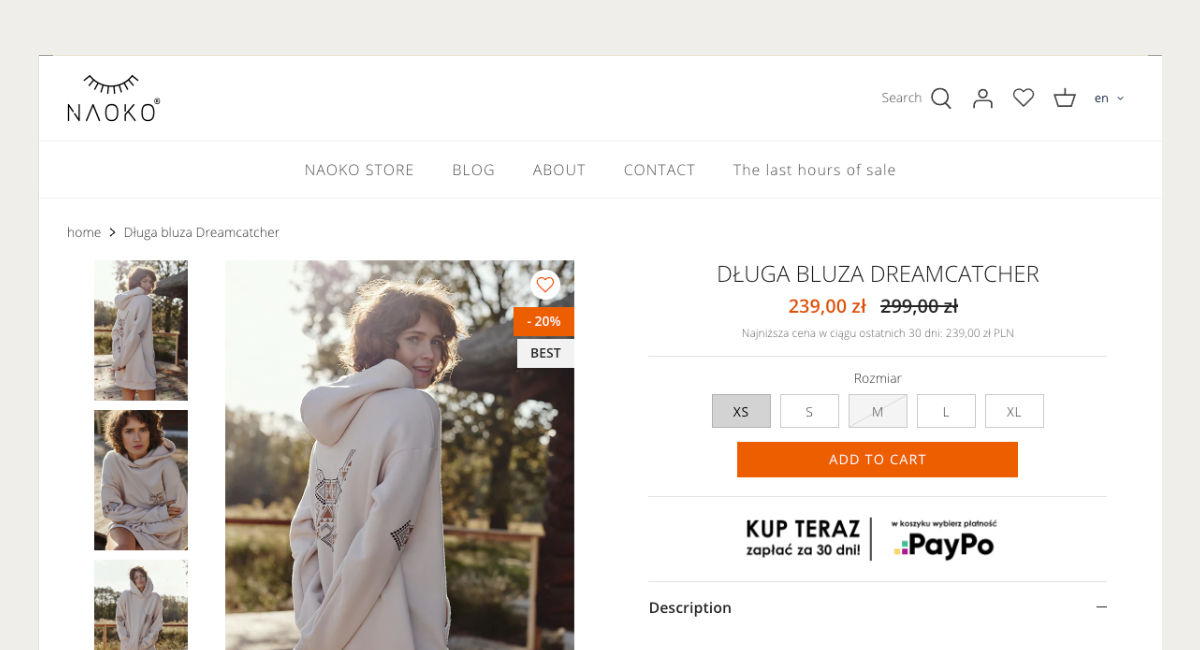
An independent fashion brand did a good job reserving an easy-to-notice space to display price history information. It could have been even better if they decided to clarify both prices further, but since it is fashion, it seems fair to presume the crossed-out price was the regular price at the collection launch and the promotional one has been applied for the time of the AW collection sale.
Risk Made In Warsaw & Pan tu nie stał
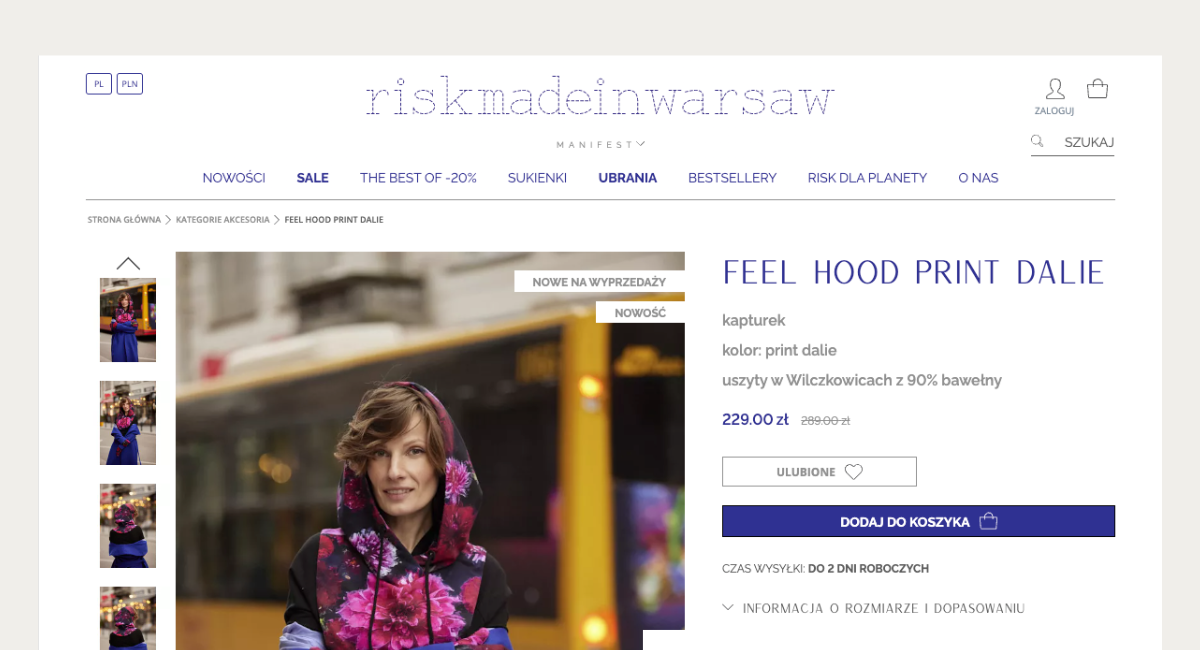
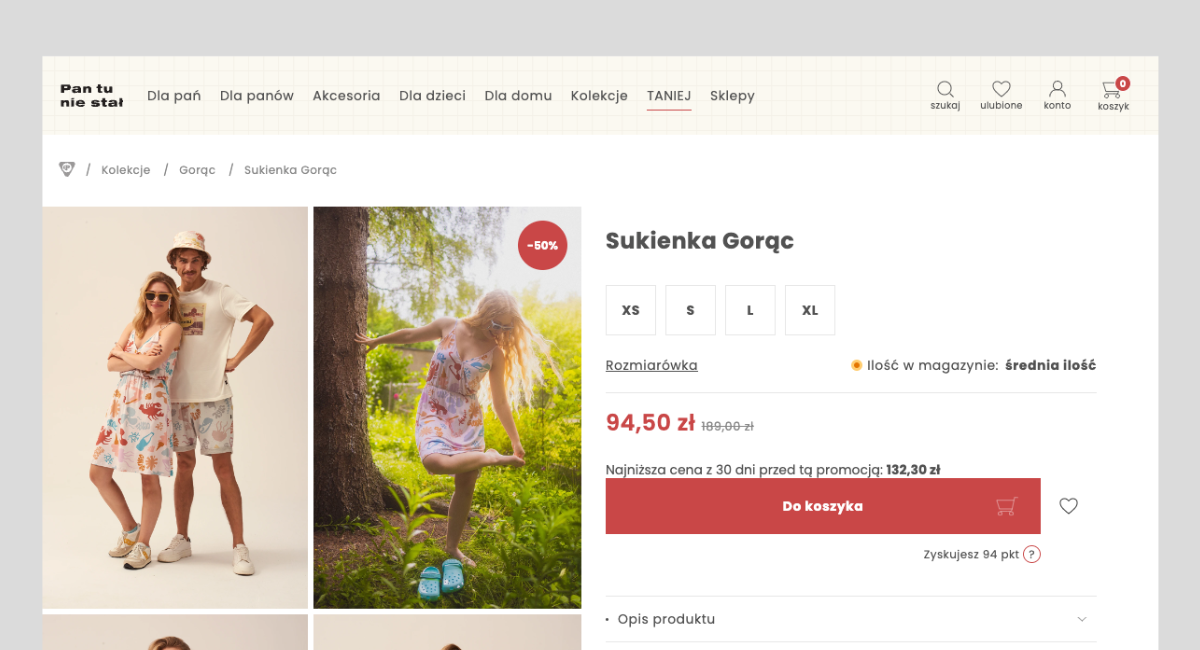
Unfortunately, it is not a rule that every independent brand has made necessary changes on time. Even though Risk Made In Warsaw can be considered a competitor of NAOKO and has an equally devoted fanbase, the company did not implement the price history widget, even though they have been running a sale event. Same case with Pan Tu Nie Stał, a Łódź-originated brand with a chain of small boutiques around Poland. Score, well, 0/5.
RESERVED and DECATHLON


Would it be the business size that determines whether a store displays price history? Well, as it turns out, it is not. The online store of Reserved, a high street brand, part of LPP’s portfolio, does not seem to recognise the need for a price history widget either. Decathlon followed a similar approach. 0/5.
Agata Meble
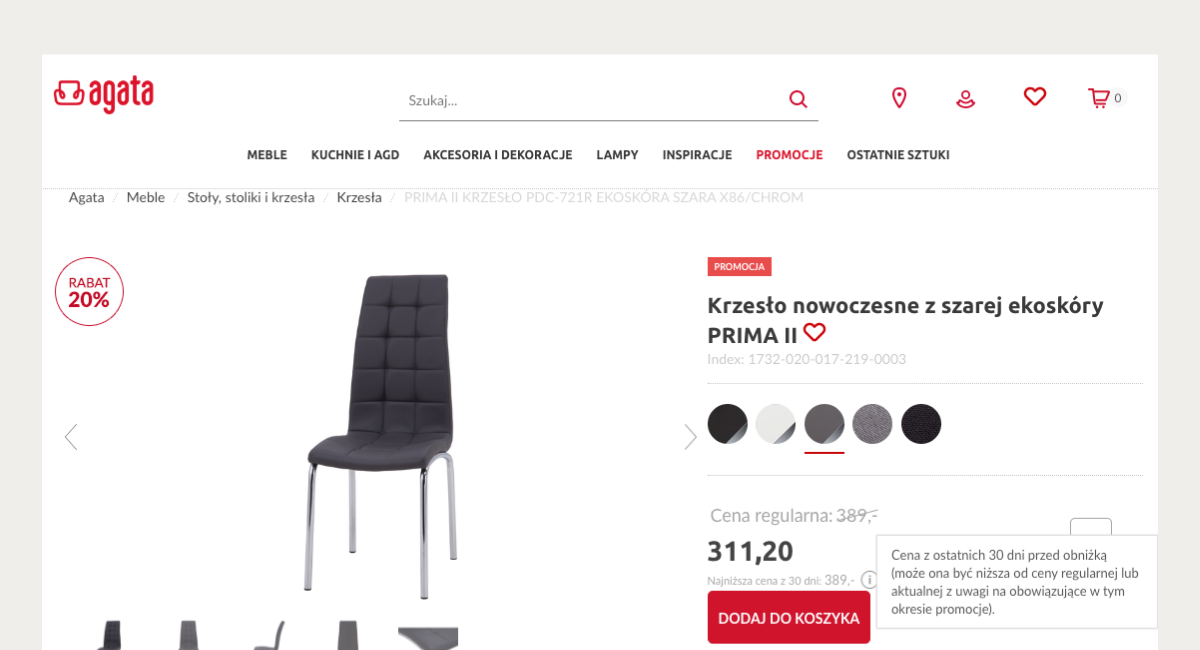
My personal favourite in the mono-brand category (I wish they had decided on a proper font size for price history information, though - unless browsing this store comes with a free microscope). Look at the structure and hierarchy here; somebody has done their job and made sure everything is completely clear for the consumer. The Omnibus-enforced message is being displayed under the promotional price, above which we see the regular price actually marked as the regular price. In addition, an explainer has been added to provide detailed information about the mechanism they use to provide visitors with price history and the precise meaning of the lowest price in this case. Score: 5/5.
Anwen
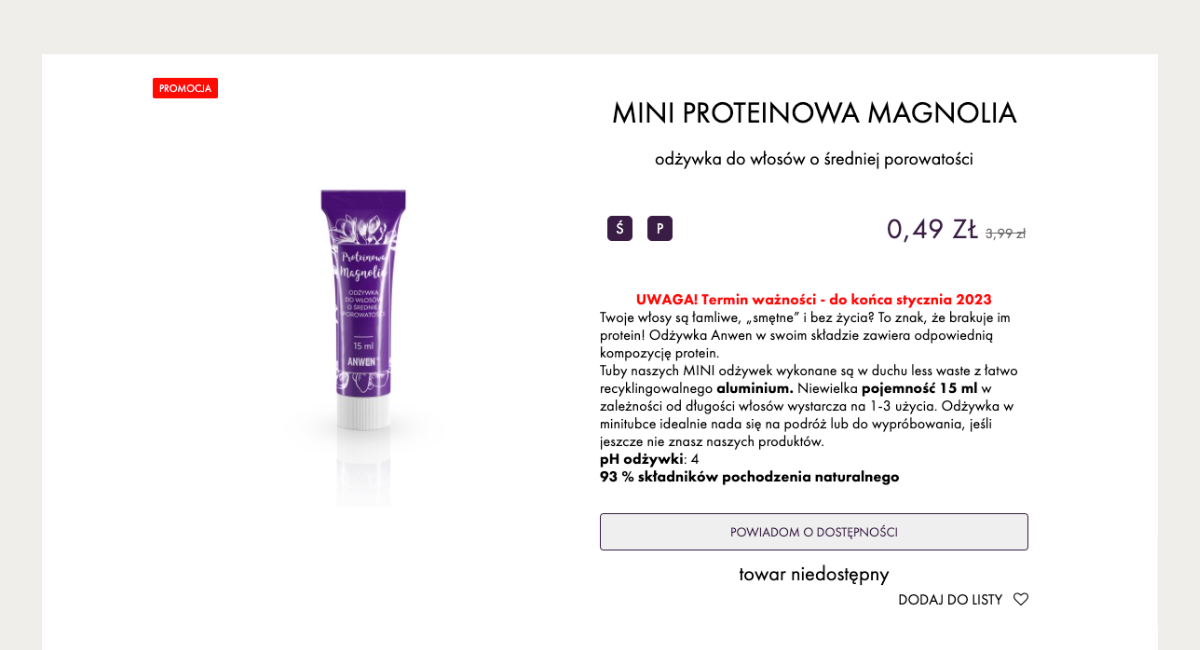
A much-loved independent haircare brand ANWEN disappoints this time. In the screenshot, we can see a price reduction case, but no price history has been provided. (Also, since the product advertised expired at the end of the month and had been marked out of stock, why are we still being shown an option to be notified upon restocking? This could have been managed better with a more structured approach to SKUs and warehouse management.)
Let’s now move to multi-brand stores, pure players and omnichannel. How did they do?
ROSSMANN

Here we see an arrangement similar to the one at Agata Meble. The original price crossed out (I can only presume this is the regular price since no information on this has been provided), a promotional one and a well-explained lowest price info. Plus, they display unit prices too, just like they do offline (in this case, we see a price per piece, but usually, it would be a price per 100ml or 100g). Score 4.5/5
SUPER-PHARM
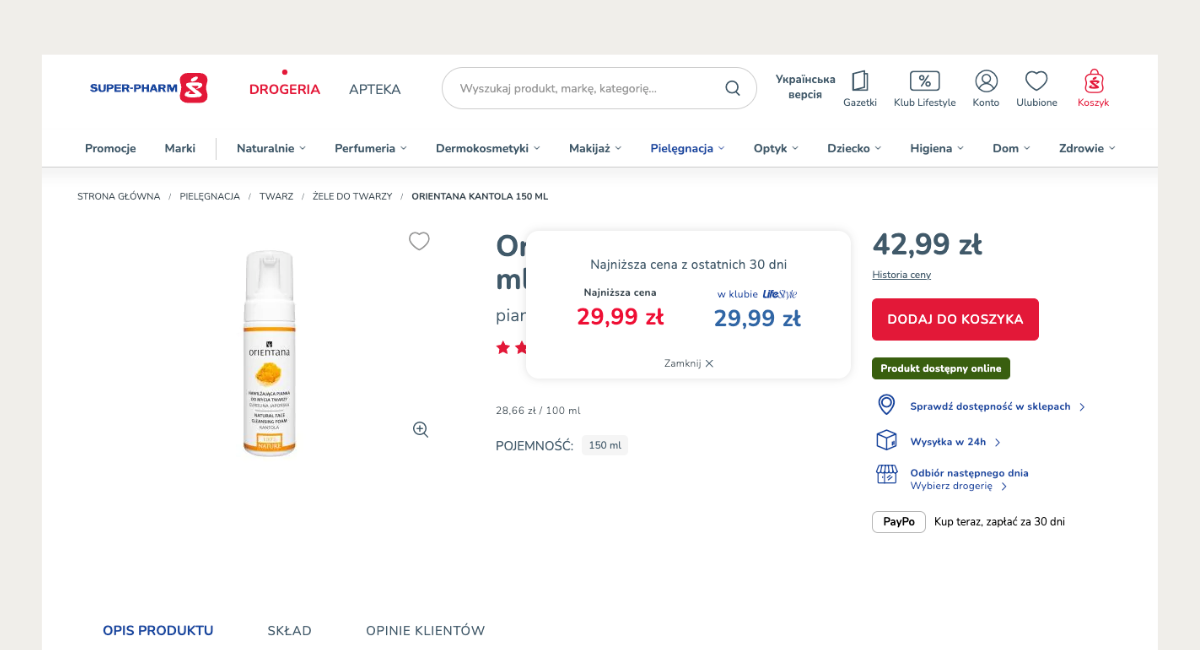
A competing drug store unveils an interesting strategy that I could describe as “being transparent to those who care only”. The price history is displayed in a pop-up box upon clicking on a tiny link provided under the current (promo) price of an item. They do not, however, specify whether the “last 30 days” are being counted from the day of each visit or the period before the promo started. Interestingly, they decided to equip the widget with additional price info that seems to be aimed at raising awareness of their loyalty programme. Score: 3.5/5
Kodano
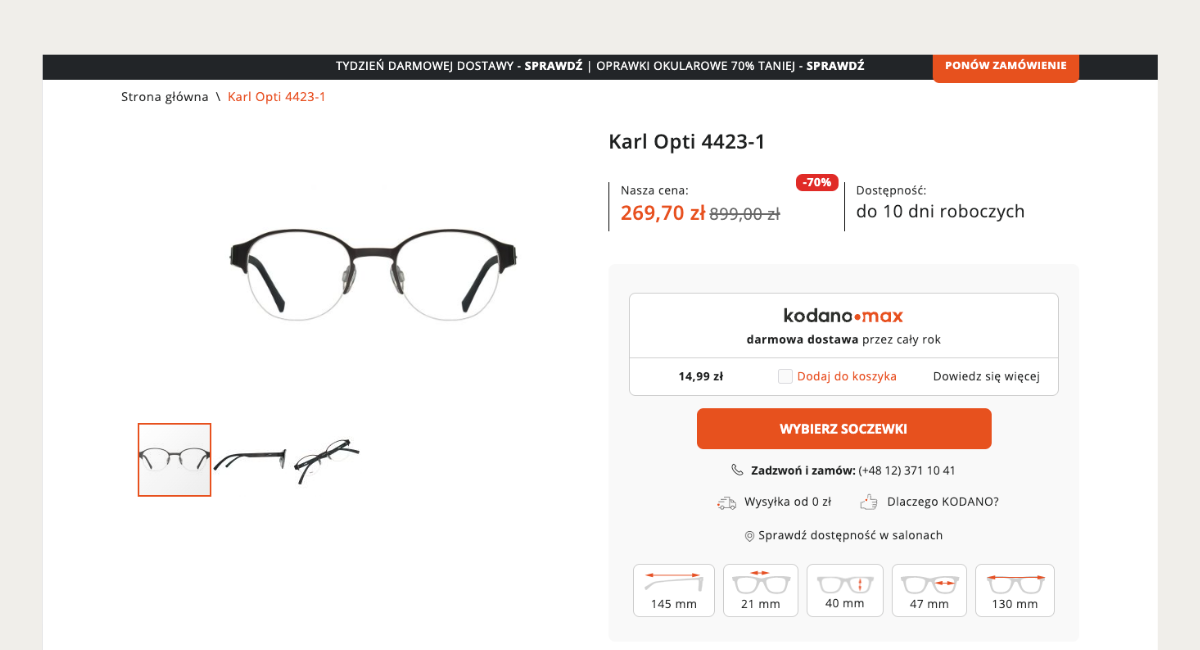
Even despite their two brick-and-mortar stores, Kodano could still be considered a pure player since most of their business is made online. Given the company’s long e-commerce experience, it comes as a surprise to see no trace of price history application. Score: 0/5.
NEONET

Consumer electronics typically come under scrutiny should any price mistake or manipulation occur, and it seems that they took the Omnibus directive application seriously. Neonet applies price history to the listing view, leaving no space for confusion. Their product page, however, does not feature any price history info, which might be problematic to visitors coming to their store via shopping ads as they will not be shown a listing, but rather land directly on the product page.
Empik

I fail to understand what happened here. The popular omnichannel media chain store and online marketplace runs a sale, advertises it with a big red banner and… displays no information about price history. As a result, I am unable to determine whether the price of a product I am looking at is the original, the promotional (I did., after all, land on the product page following the “Sale” listing…), or the suggested one. Or perhaps the idea of “sale” should be somehow related to the price comparison between Empik and other retailers who compete in the marketplace? Or is it just a “we cannot be bothered with the law, so let us find a way to go around it” type of situation? Seriously, I could not be more confused. What a failure.
Task 2: Reviews and Recommendations
Even before Omnibus, a lot of Polish online shops were already making sure the reviews they receive are trustworthy. Now, this has become less voluntary. Reviews must be verified and published only if their source has been confirmed as coming from an actual buyer. Let us see how Polish e-commerce is dealing with the changed regulations.
Empik, for example, displays verified reviews at the top of the reviews section of a product page. However, the store did not remove unverified reviews. The process of review verification has also not been detailed for the visitor.
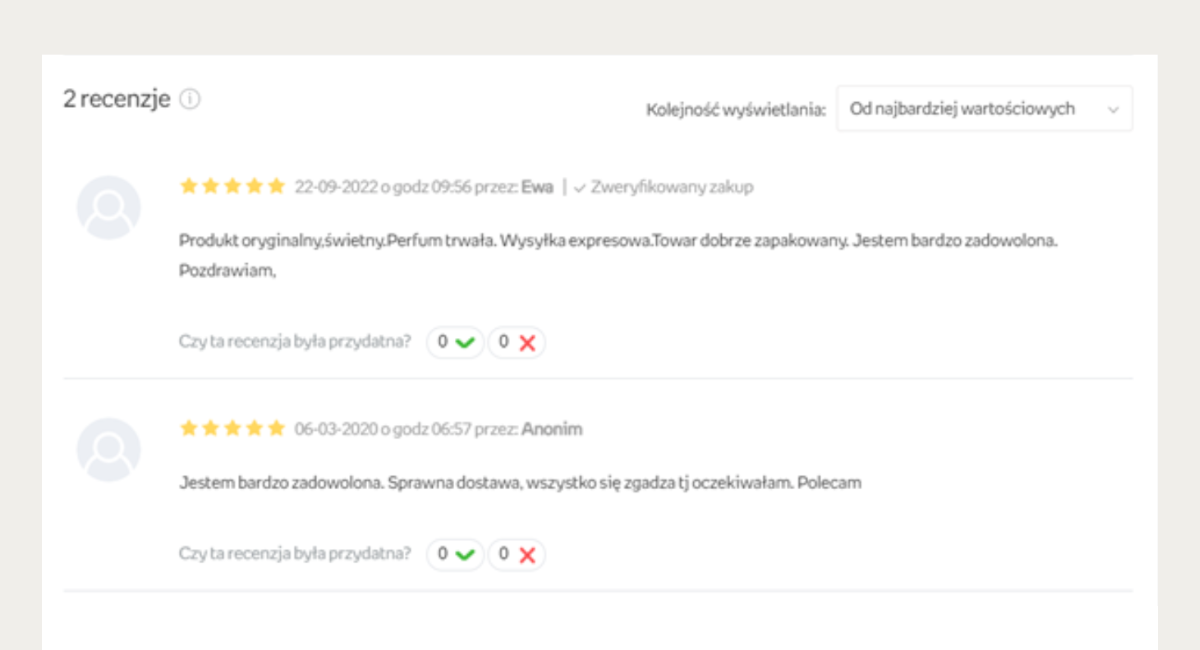
Ceneo, Poland’s top price comparison website and one of the go-to places for product reviews, seemingly introduced the Zaufane Opinie (Trusted Reviews) programme to most listings. Aiming to add a review to ca. 20 products, I was met with the following pop-up:
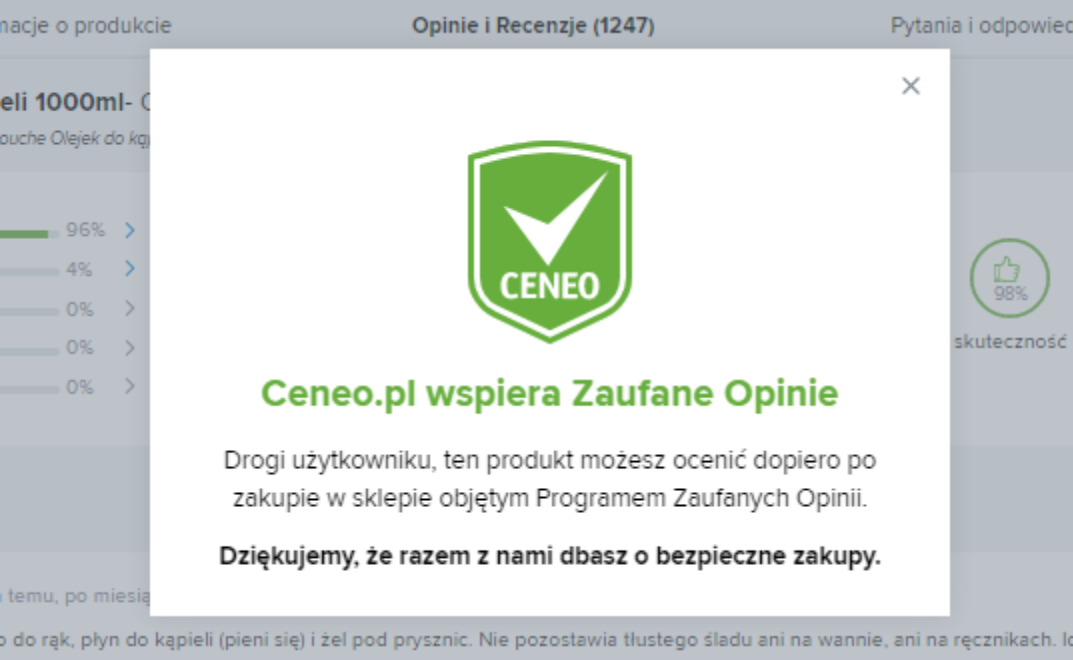
However, on 10th January, I was still able to add a review to a product I did not purchase myself and have it published on the page straight away. There is certainly room for improvement.
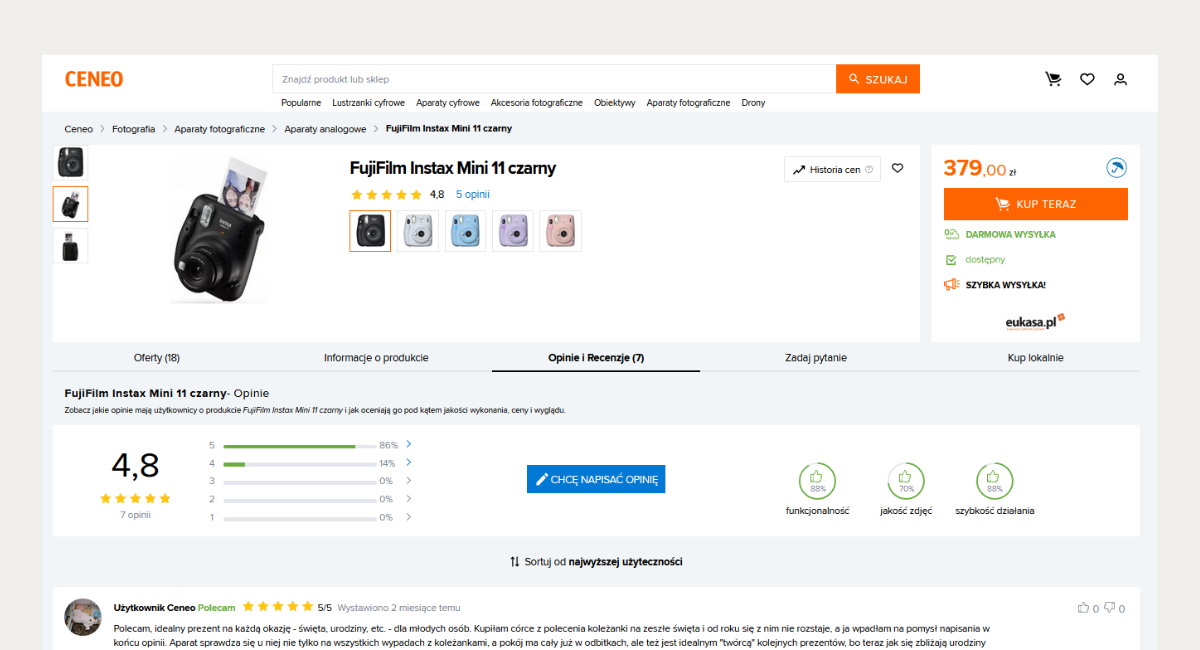
Task 3: Seller status
As mentioned before, the Directive obliges e-sellers and marketplaces to make it clear to consumers whether a company or a private individual is offering a certain item or service. This is to facilitate informed decision-making. OLX, Poland’s biggest classified ads website, has done an excellent job of making it clear to the visitor. Not only can we see the company/private info, but also full company details are available. Score 5/5.
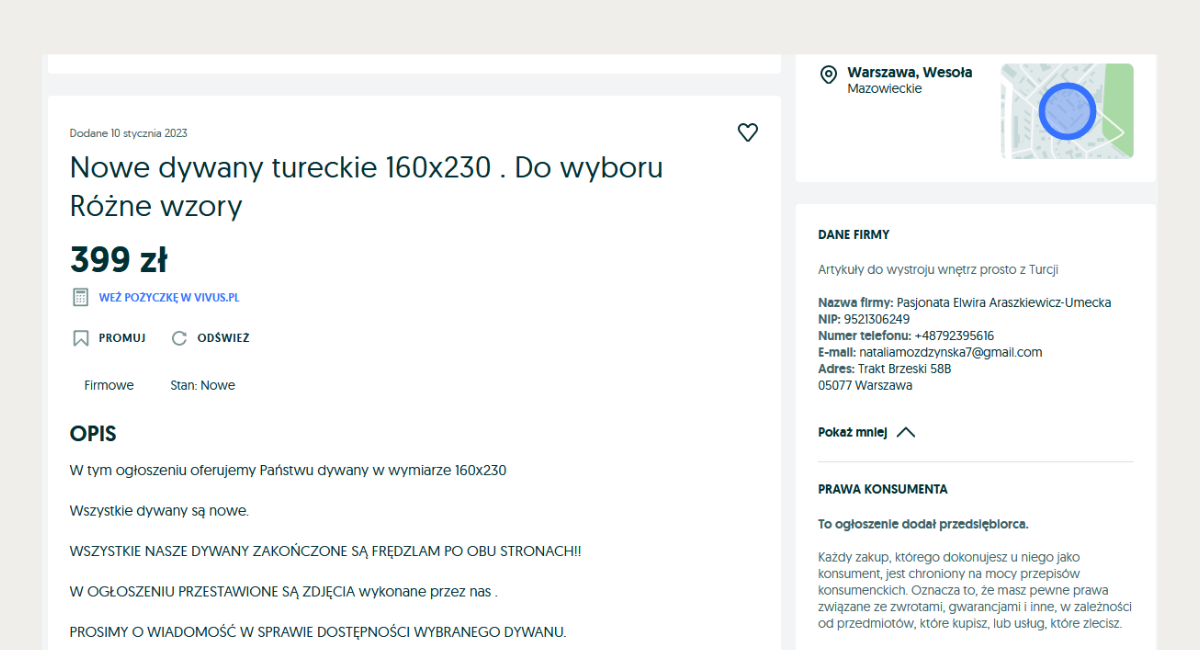
The same thing, sadly, cannot be said about Empik, who disappoints again. Even though the company opened a marketplace a good few years back, for some reason, they did not find it necessary to provide customers with the full info required by new regulations.

The importance of not being idle
Failing to introduce the updates listed in new regulations can cost the business up to a hefty 10% of yearly turnover.
It will create a more level playing field for businesses, and provide greater protection for consumers. This will help to foster trust and confidence in the e-commerce market, which is essential for its growth and development.
Author

Małgorzata Radkiewicz
e-Commerce Strategist
Małgorzata’s 15 years of experience have seen her delivering effective solutions to ecommerce brands of all shapes and sizes across the EU and UK. Małgorzata is experienced in brand positioning, traffic and ecommerce sales analytics and leading ecommerce teams and projects for B2B and D2C businesses.
Related articles
![A well-crafted prompt doesn’t just work once. It works across teams, channels, and campaigns. It can be tweaked for new use cases and refined based on what performs best.]()
June 27, 2025 / 4 min read
Prompts are not just for AI. Why building a prompt library pays off
Prompts aren’t throwaway lines. They’re repeatable, scalable assets that can streamline your marketing your team’s output. Learn how to build a prompt library that delivers.
![Woman using a wheelchair in the office settings]()
June 17, 2025 / 5 min read
What is accessibility and why it matters?
Accessibility ensures everyone — including those with disabilities or limitations — can read, navigate, and engage with your content equally.
